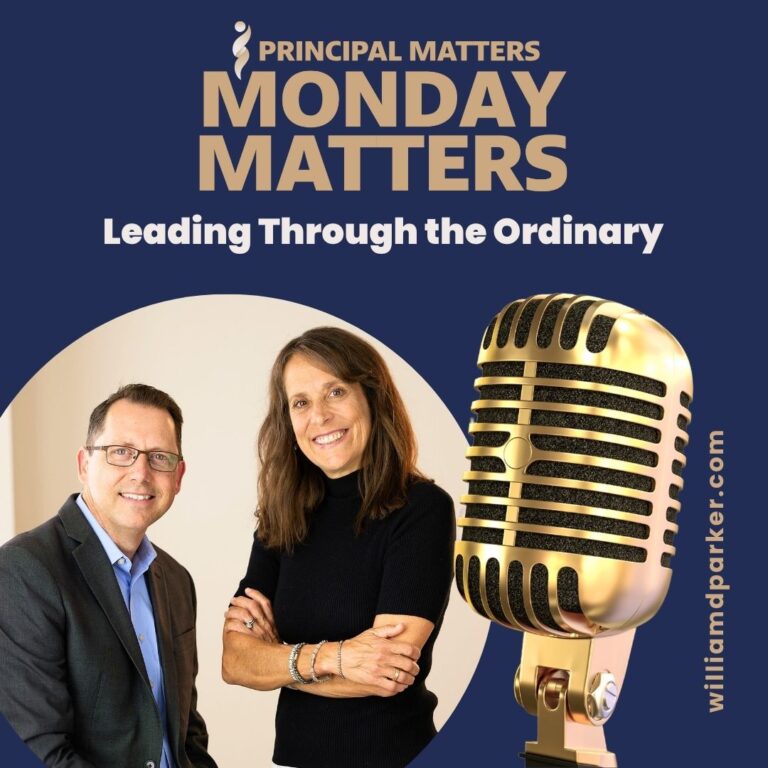Over the weekend, I was having lunch with a friend who works in petroleum engineering. We talked about the kind of research and data that he uses to determine which sites are best for drilling or exploration.
Investors are especially interested in the ability of his company to substantiate their commitment to providing resources—especially in light of the current downturn in the oil market.
When the conversation switched to my work in education, he asked me a probing question. It was so different than questions most people ask me about school that I asked him to repeat it. “In a meta-analysis of student data,” he queried, “what would you say are the most significant factors in predicting student success?”
After sitting on the question a few moments, I said, “Well, socio-economic backgrounds, parental education, and literacy in the home are some of the most significant indicators for student success—especially in assessments like ACT or SAT.”
We talked about why those factors play such a role in the lives of students, but I also mentioned how some schools beat the odds when they find ways to provide these necessary supports and resources to less advantaged students.
Better Answers To The Big Question
A few days later, I was listening to a presentation by Cris Tovani, who shared a blog post by Grant Wiggins entitled “What works in education—Hattie’s list of greatest effects and why it matters” which is an anlysis of John Hattie’s book Visible Learning–an exhaustive research of almost every instructional strategy used in schools today, and which factors result in the most significant gains to student learning.
Wiggin’s article was a brief synopsis of which factors Hattie identified in order of most effective top-down with the asterisk-marks showing an effect of almost a year of academic growth. Wiggins adds commentary on the last two:
• Student self-assessment/self-grading*
• Response to intervention*
• Teacher credibility*
• Providing formative assessments*
• Classroom discussion*
• Teacher clarity*
• Feedback*
• Reciprocal teaching*
• Teacher-student relationships fostered*
• Spaced vs. mass practice*
• Meta-cognitive strategies taught and used
• Acceleration
• Classroom behavioral techniques
• Vocabulary programs
• Repeated reading programs
• Creativity programs
• Student prior achievement
• Self-questioning by students
• Study skills
• Problem-solving teaching
• Not labeling students
• Concept mapping
• Cooperative vs individualistic learning
• Direct instruction
• Tactile stimulation programs
• Mastery learning
• Worked examples
• Visual-perception programs
• Peer tutoring
• Cooperative vs competitive learning
• Phonics instruction
• Student-centered teaching
• Classroom cohesion
• Pre-term birth weight
• Peer influences
• Classroom management techniques
• Outdoor-adventure programs
Can you guess the next two items on the rank order list?
“Home environment” and “socio-economic status.”
Did you catch that? “Home environment” and “socio-economic status” ranked AFTER the long list of other strategies that research shows provide greater significant gains in student learning.
As Wiggins explains: “In other words, everything on the list has a greater effect on student achievement than the student’s background.”
Analyzing the Meta-Data of Student Success
Instinctively, educators know that every student has the capacity for great learning, regardless of his background or handicaps. But I was guilty of an easy generalization by classifying a student’s background higher than any other factor.
In 2005, ASCD published an article on another research project based on high performing schools in high poverty areas.
In comparing high performing schools in high poverty areas with lower performing schools with similar demographics, here was their conclusion:
“High-performing, high-poverty schools seem to exhibit a number of common traits that differ significantly from practices in lower-performing, high-poverty schools, including a schoolwide ethic of high expectations; caring, respectful relations between stakeholders; a strong academic and instructional focus; regular assessment of individual students; collaborative decision-making structures and a nonauthoritarian principal; strong faculty morale and work ethic; and coordinated staffing strategies.”
The ASCD research also identified 8 common “school culture” factors in high performing schools:
• The belief that all students can succeed at high levels
• High expectations
• Collaborative decision making
• Teachers accept their role in student successor failure
• Strategic assignment of staff
• Regular teacher-parent communication
• Caring staff and faculty
• Dedication to diversity and equity
Why Invest In Education?
In the world of petroleum engineering, investors are willing to commit to drilling and exploration if the data supports that their risk is a wise one. In the world of education, policy-makers and voters are the ones who determine the percentage of revenues made in our schools.
Here’s my question: How are we giving our investors a wise risk on increasing funding for common education?
Part of the answer may be found in how we communicate the return on that investment–not necessarily in test result–but more significantly in the quality of education students receive that leads to success.
Conclusion
The next time you’re asked what factors most affect student success, avoid the easy answer that I gave. Instead remember what research confirms: Effective instructional and learning practices coupled with deep commitments and nurturing school cultures are the greatest components affecting student academic growth. And student growth requires exceptional instructors and teaching resources that are worth the investment.
Now It’s Your Turn
What strategies are you already seeing used to encourage student growth in your classrooms? What are some factors from Hattie’s list that you can begin exploring in helping improve learning even more?
Sign-Up For Free Updates
When you enter your email address here, you will automatically receive my newest posts. Let’s keep learning together!
Principal Matters–The Book!
School leaders are very busy, so each of the twenty-four chapters is designed as a quick-read and followed with take-action questions for follow-up or reflection. If you want practical ideas on understanding your purpose, managing school teams, dealing with challenges, and leading with courage, action, motivation, and teamwork, go HERE to pick up a copy for you or your team.




